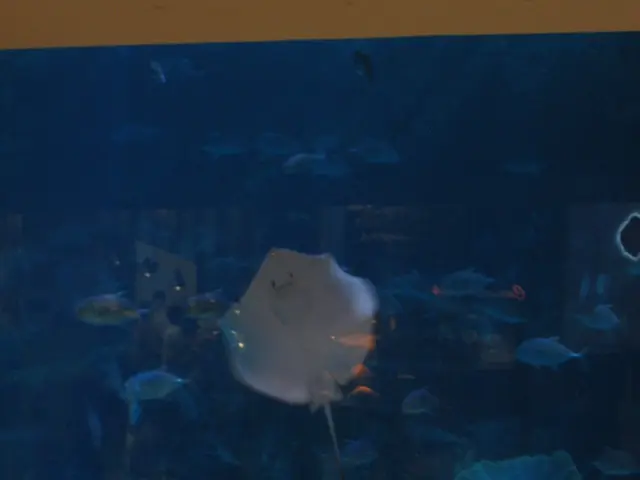Planet nearby emits strong sulfur smell and rain glass, offering astronomers valuable insights about existence beyond our Earth
Hot Jupiter HD 189733 b Unveils Surprising Atmospheric Composition
Exoplanet HD 189733 b, located approximately 63 light-years away in the constellation Vulpecula, has been the subject of intense study due to its unique characteristics. This hot Jupiter orbits its star very closely, completing one orbit every 2.2 days at a distance of just 4.5 million km.
Temperature and Atmospheric Composition
The atmosphere of HD 189733 b is extremely hot, with temperatures ranging from 900ºC to 1000 K (about 700–900ºC), similar to the melting point of silver. The atmosphere contains water vapor, methane, and hydrogen sulfide, with water vapor being the dominant molecule. Methane and hydrogen sulfide were detected alongside water vapor, contributing to the complexity of its atmosphere.
Unusual Features
HD 189733 b is known for its striking cobalt blue color, fierce atmospheric winds, and intriguing magnetic or radio emission features. The cobalt blue color is attributed to atmospheric scattering, while the winds are driven by the extreme temperature difference between the star-facing side and the night side. Observations have also detected a high-frequency radio burst, possibly linked to star-planet magnetic interactions or stellar activity.
The Study and Future Implications
Guangwei Fu from Johns Hopkins University led a study on HD 189733 b using the James Webb Space Telescope (JWST). The team accurately measured the water, carbon dioxide, and carbon monoxide content of the planet's atmosphere. The discovery of hydrogen sulfide on HD 189733 b is considered a stepping stone for finding this molecule on other planets.
The abundance of sulphur, carbon, nitrogen, oxygen, and phosphate on HD 189733 b provides insight into their presence on other planets that may be hospitable to life. Fu stated that sulphur is a vital element for building complex molecules, and its study is essential for understanding planet formation. His team will now attempt to find traces of sulphur on further exoplanets to build a picture of how the element is distributed on other worlds.
Despite the presence of organic molecules such as methane and water, HD 189733 b is far too hot and extreme to be habitable. Its size is about 1.15 times the mass of Jupiter and 1.25 times Jupiter's diameter. The wind on HD 189733 b blows up to 8,000 km/h (5,000 mph), and it rains glass due to the extreme temperatures.
In summary, HD 189733 b is a hot Jupiter with an extremely hot, water- and methane-rich atmosphere, trace hydrogen sulfide, extreme winds with molten glass rain, a vivid blue color, and intriguing magnetic or radio emission features. The study on HD 189733 b can help gain more understanding of how different types of planets form.
[1] HD 189733 b: A Hot Jupiter with Water-Rich Atmosphere, https://exoplanets.nasa.gov/exoplanets/exoplanet-of-the-day/hd-189733-b/ [2] HD 189733 b, https://exoplanets.nasa.gov/exoplanets/exoplanet-catalog/exoplanet/HD_189733_b/ [3] HD 189733 b, https://www.jpl.nasa.gov/spaceimages/details.php?id=PIA23678 [4] HD 189733 b, https://www.jpl.nasa.gov/news/news.php?feature=7294
- The study of exoplanet HD 189733 b, using advanced space-and-astronomy technology like the James Webb Space Telescope, has unveiled surprising atmospheric compositions, including the presence of water vapor, methane, hydrogen sulfide, and organics like carbon dioxide and carbon monoxide in the universe.
- The discovery of hydrogen sulfide on HD 189733 b, a hot Jupiter, signifies a significant step in the quest for understanding the origin of this essential element and its potential distribution in the universe, contributing to the scientific community's knowledge about planet formation and the possibility of life-sustaining planets.




